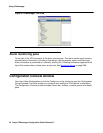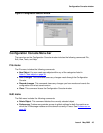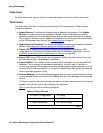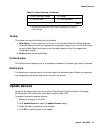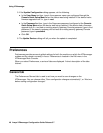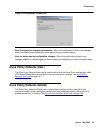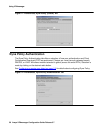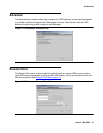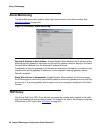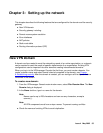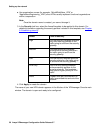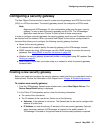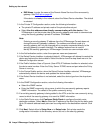
Using VPNmanager
52 Avaya VPNmanager Configuration Guide Release 3.7
Alarm/Monitoring
The Alarm/Monitoring tab is used to define high-level functions of the alarm console. See
Monitoring alarms
on page 268.
Figure 15: Preference, Alarm/Monitoring
Resolve IP Address to Device Name - Enable/Disable. When enabled, the IP address of the
alarming security gateway is translated into the security gateway name for display in the Alarm
Console. When disabled, only the alarming IP address is shown.
Functionally, all security gateways in all domains are scanned and a map file is created to cross
reference the security gateway IP addresses to their respective security gateway names.
Default is enabled.
Alarm When Device is Unreachable - Enable/Disable. When enabled, this function causes
the VPNmanager to continuously send SNMP packets to all security gateways to verify that they
are running. If a security gateway fails to respond, an error message is displayed in the Alarm
Console.
TEP Policy
The Tunnel End Point (TEP) Policy tab lets you control the security policy applied to the traffic
that flows between the end points of a tunnel. The default is off, that is, do not apply configured
VPN policies to TEP traffic. See TEP Policy
on page 209.



